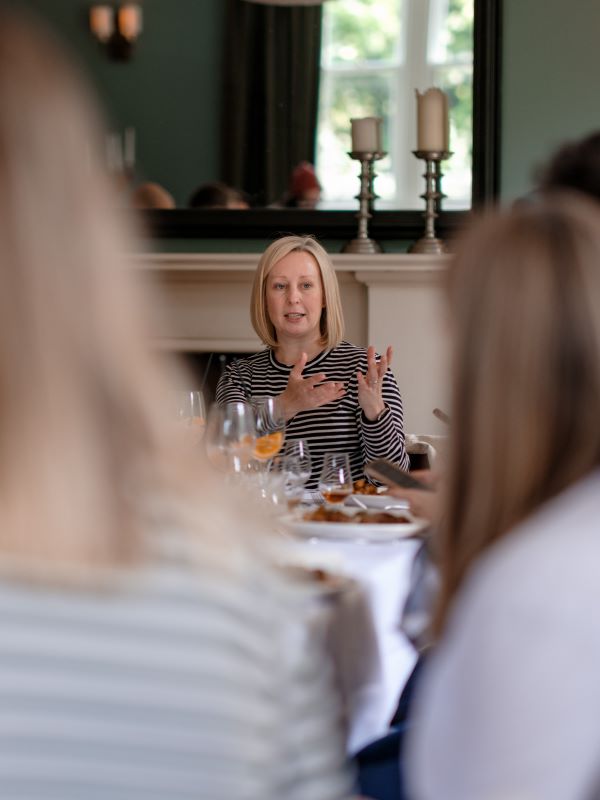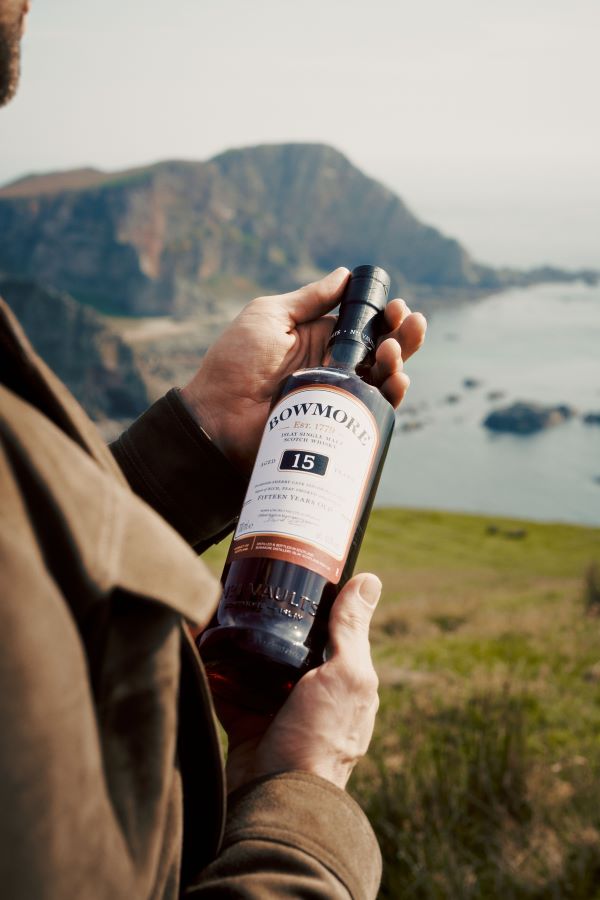A Dram with Kirsteen Beeston
Scotch whisky may be facing tough times, but Kirsteen Beeston has lost none of her enthusiasm for the drink that has taken her from Bowmore to Grouse, The Macallan, Jura and back to Bowmore, as global marketing director. Tom Bruce-Gardyne listens in …
Having started out on fizzy water in San Franciso, followed by seven years in New World wine in England, Kirsteen Beeston felt destined for the hard stuff. "I guess, going from no alcohol to 14%, it was inevitable I'd get into spirits," she says of joining Suntory-owned Morrison Bowmore in 2009, a move that brought her home to Scotland.

After five years, "I went from the beautiful, boutique world of single malts into the mainstream world of blends, and Famous Grouse," she explains of her next role with the distributor Maxxium. "It was much more commercial. Much more about FMCG marketing." Then came four years working alongside Ken Grier at The Macallan, followed by a similar stretch with Whyte & Mackay, looking after Jura, Fettercairn and Tamnavulin, until completing the circle by rejoining Suntory as Bowmore's global marketing director in 2022.
While that bar-fly approach of flipping from brand to brand is common among those who market drinks, Kirsteen has remained totally committed to Scotch. But can the same be said of the corporate giants for whom the drink is just part of their bulging portfolios? "I think you only need to look at the swathe of innovation, the investment in marketing campaigns and brand homes," she replies. "And the level of consumer engagement, to know the commitment, the investment is there."
And though "there are opportunities in other spirits, it's not at the expense of Scotch, it's in addition." Yet with tough trading conditions right now, she says: "We're starting to see more dynamic pricing within the category. What's great is the only person who wins from that is the consumer. Being able to afford small indulgences is really important."
Before long, we get onto that hoary old chestnut of ‘premiumisation' which Kirsteen believes is still happening at some level. "With rare 30, 40, 50 year-old malts, I don't think the desire for them goes away, just because things feel quite difficult at the moment." That may be true, but what of the accusation made by the whisky writer Dave Broom in a recent post that ‘For too long the misguided belief that the future of whisky lay in the luxury market has dominated the industry'?

She agrees it would be a big mistake if true, but says: "In my experience, I don't think there has been any tunnel vision of only operating at the very top-end of the category. Actually, quite the opposite. It's been about how do we democratise single malts? How can we get more people into the category to enjoy what we do, be it Tamnavulin or Jura, Bowmore 12 or The Famous Grouse."
I imagine Dave's inbox is rammed with the same PR injunctions as mine to ‘Hold the front page!' because of the imminent arrival of yet another pricey, over-packaged, limited release whisky. This no doubt promotes a rather distorted view of the trade. For Kirsteen it is just to "hopefully drive some noise and awareness around the brand overall. But I guess what we're not very good at is talking about the huge investment that's put into trying to recruit everyday drinkers."
"What we do talk a lot about is we don't take loyalty for granted, so, we need to continually recruit and re-recruit consumers into our brands every single year," she says. "Recruitment is critical for every Scotch whisky brand. If you're only focussed on loyalty, then you've probably got a short-term future."
That lesson was sometimes lost in the past. A generation ago, some of the big Scotch brands preferred preaching to the converted. Rather than seeking to win over younger vodka drinkers, they would wrap themselves in the comfort blanket of their ageing consumer base, or so it seemed. There were occasional, somewhat clumsy attempts to appeal to women as consumers rather than mere gift-givers.

Marketing Scotch whisky has improved dramatically in the meantime, reckons Kirsteen. "Look at the approaches that have been taken to make single malts more accessible and help people dispel some of the myths," she says. "In the last ten years I've felt the change – the move away from just going after the whisky enthusiast to something much more mainstream."
If some content has been a bit earnest at times, she feels most brand-owners get that "it's single malt whisky. It's not a life-saving medicine. Over the last few years there's been a huge injection of fun and personality. If I think of Laphroaig and ‘Opinions Welcome', that's a brilliant example of a brand not taking itself too seriously." She also praises Glenmorangie's ‘Delicious & Wonderful' campaign that "just has such an air of lightness and wonder."
As for recruiting women, "it's critical to the long-term success of what we do, but I don't think success will come through women-centric approaches to marketing and communications," she says. "It's about – ‘do you like characterful drinks?' ‘Do you like products with heritage and stories?' If you're interested in any of that we've got something for you."
With her infectious enthusiasm for malts, Bowmore is in good hands as it launches another eight whiskies this autumn, four as the new Sherry-Oak range and four in travel retail. But what of those big old blends like Famous Grouse she once worked for? "Maybe what we haven't done as well as we could is share some of the artistry that exists within blending," she says. "I do feel there's an opportunity to breathe new life into blends." Let's hope so.

Award-winning drinks columnist and author Tom Bruce-Gardyne began his career in the wine trade, managing exports for a major Sicilian producer. Now freelance for 20 years, Tom has been a weekly columnist for The Herald and his books include The Scotch Whisky Book and most recently Scotch Whisky Treasures.
You can read more comment and analysis on the Scotch whisky industry by clicking on Whisky News.
